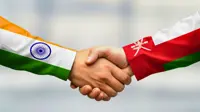Wind power can attract Rs.1 lakh crore investments by 2020: Crisil
09 Jul 2015
Wind-power capacity in India has grown an impressive five-fold in the last 10 years, touching 23,000 megawatt (mw) in March 2015.
Growth is being propelled by tariffs - at Rs 4-5.5 per unit currently - inching towards grid parity. Crisil expects this trend to continue, supported by favourable government policy towards renewable energy.
''Grid parity, along with the recently restored fiscal benefits, make wind power projects profitable, sustainable, and scalable," says Pawan Agrawal, chief analytical officer, Crisil Ratings.
"As a result, Crisil expects wind-power capacity to nearly double from current levels -- growing at 4,000 MW per annum -- in the next five years. That translates into an investment potential of Rs.1 lakh crore.''
In the last five years, nearly 60 per cent of the capacity added was by private developers.
The top ten developers, with a 20 per cent share of capacity, have invested about Rs12,000 crore as equity.
The sector's rising attractiveness has also been accompanied by a change in the lending approach from sponsor support seen earlier to one based on project cash flows.
Given the milieu, Crisil has fine-tuned its criteria for rating wind-power projects by evaluating risks and mitigants.
Wind-power projects face unique risks, such as wind variability -- both across years and seasonally within a year – that impacts generation; delays in receivables, or the counterparty payment risk.
Extensive simulation using Crisil's proprietary models indicate that lenders can sufficiently address risks in a wind-power project by focusing on two key mitigants - first is maintaining adequate debt-service-coverage-ratio (DSCR), computed using a base case power generation at P90 plant load factor.
Second is by creating a liquidity buffer linked to counter-party payment profile and seasonality. Such a liquidity buffer can be provided in various forms.
Then there are other mitigants for added comfort, such as portfolio diversification and debt sculpting.
The cost and efficacy of each mitigant, however, differs. Crisil's criteria framework is designed to evaluate the efficacy of each mitigant in addressing the two risks.
Says Somsekhar Vemuri, senior director, Crisil Ratings, ''A sharper focus on risk mitigants is a credit positive for the wind power sector, and can help developers raise funds at lower costs. It can be complemented by innovations such as partially guaranteed debt that will enable the wind sector to tap the capital markets. This, in turn, will reduce funding costs and improve competitiveness.''
The application of sector-specific criteria on CRISIL's wind-power portfolio of 22 companies resulted in one rating upgrade, an outlook revision to positive, and a rating downgrade.
.webp)





















